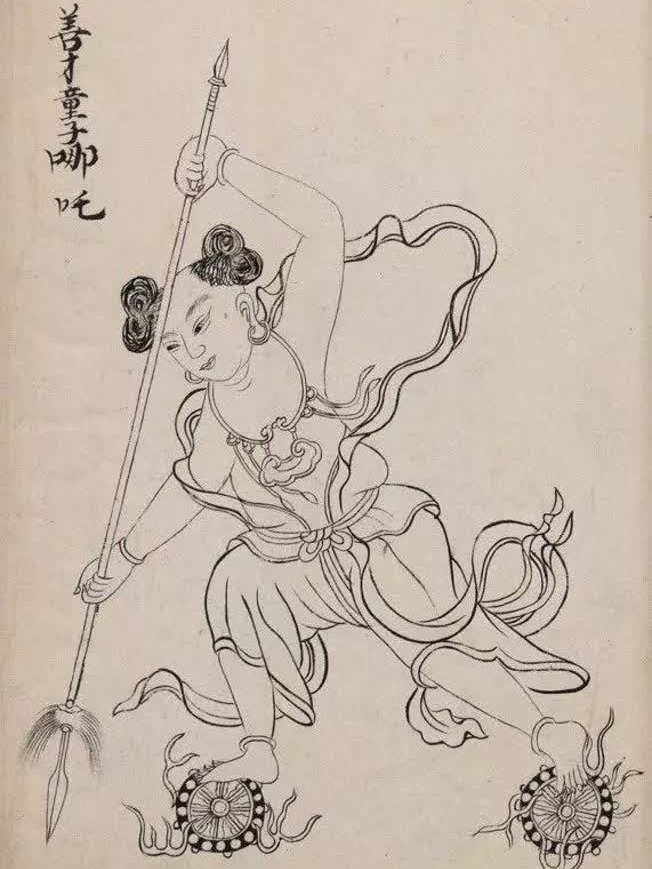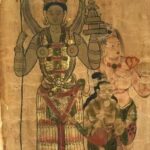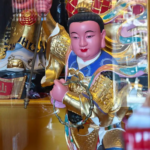The name “Nezha” (哪吒) originates from Buddhism, with its full Sanskrit name being Nalakuvara or Nalakubala. In Chinese Buddhist scriptures, it was transliterated as “那罗鸠婆,” “那吒鸠伐罗,” or “那吒俱伐罗.” While these transliterations may appear phonetically distant in modern Mandarin, they reflected closer pronunciations in ancient Chinese. As Buddhism’s influence grew in China, Nezha’s image underwent localization. Since multi-character Sanskrit names conflicted with Chinese naming conventions, Tang Dynasty scholars shortened them to “那吒.” Later, the “那” was modified to “哪” with a radical “口” (mouth) to match the character “吒,” eventually standardizing as “哪吒” in Ming-Qing literature and operas.
This phenomenon exemplifies transliteration adaptations between languages with distinct phonetic systems. Other Buddhist terms commonly mispronounced include:
- “南无” (nā mó, not nán wú): meaning “devotion”
- “般若” (bō rě, not bān ruò): meaning “wisdom”
- “伽蓝” (qié lán, not jiā lán): meaning “monastery”
- “舍利” (shè lì, not shě lì): referring to Buddhist relics
- “阿弥陀佛” (ē mí tuó fó, not ā mí tuó fó): the Amitabha Buddha chant
Originally depicted as Vaiśravaṇa’s third son in Buddhist cosmology, Nezha served as a dharma protector in Mount Sumeru’s northern realm. Through Tang Dynasty’s religious syncretism and Song Dynasty’s Taoist-Buddhist fusion, Nezha evolved into a child deity within Taoist mythology, complete with a Taoist master Taiyi Zhenren in the Ming novel Investiture of the Gods.
Regarding naming conventions: While Nezha’s brothers Jinzha (金吒) and Muzha (木吒) appear to incorporate “metal” and “wood” from the Five Elements, their names actually derive from Sanskrit transliterations:
- Jinzha originates from Kundali (“甘露” – nectar), initially translated as “军荼利” before simplification
- Muzha stems from Pratimokṣa (“波罗提木叉”), later abbreviated as “木叉”
The shared character “吒” in all three brothers’ names reflects Chinese naming conventions for siblings rather than intentional symbolism. Notably, the absence of family names like “Li Jinzha” or “Li Nezha” in literature reveals the incomplete sinicization of these Buddhist-derived names.
This nomenclature evolution demonstrates how Chinese culture adapted foreign religious concepts through phonetic approximation, semantic association, and narrative reinvention, ultimately creating distinctively localized divine figures while retaining traces of their transcultural origins.


